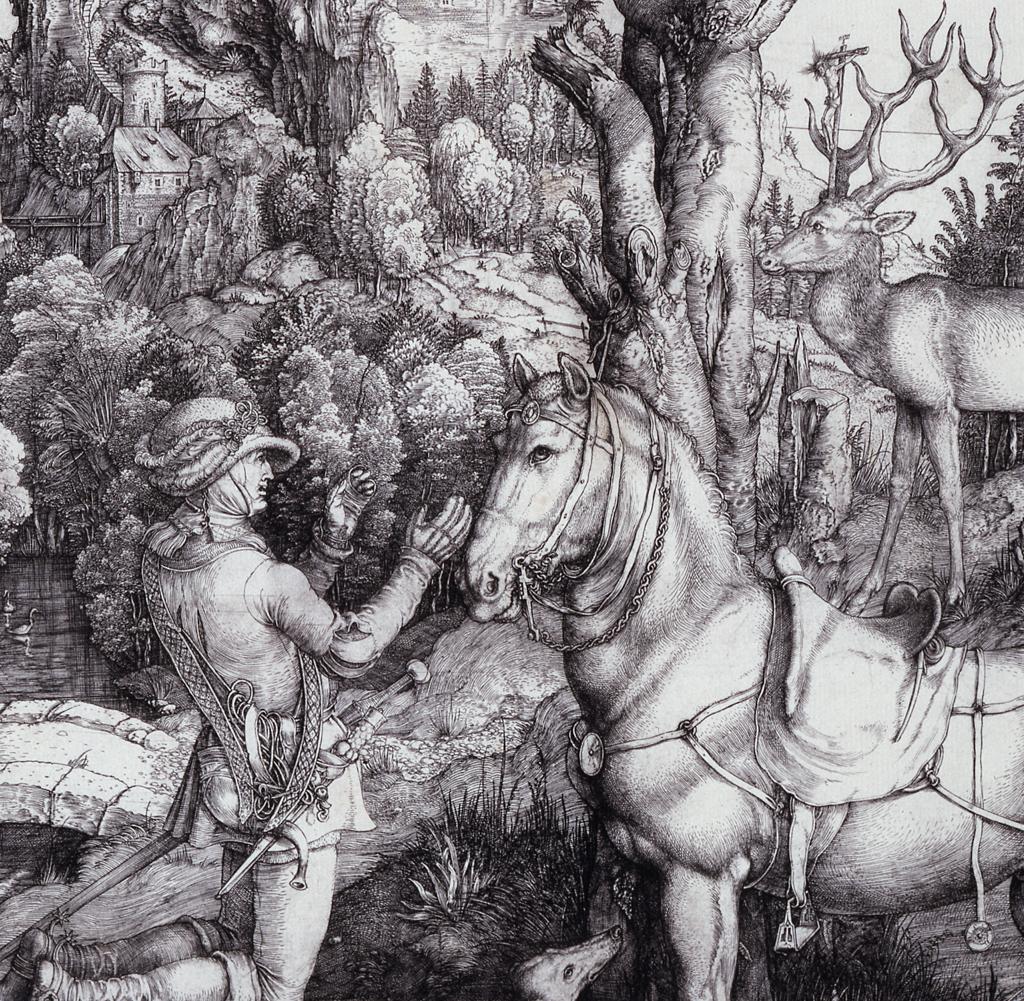The German Apelles
Albrecht Dürer was a tremendously gifted artist who lived in Nuremberg – one of the leading printing cities in Germany during the Renaissance. His exposure to the graphic arts through printed books and his involvement in his father’s goldsmith shop at a young age led him to embrace print media as his preferred means of artistic expression. Learning how to use the burin, a tool used in the goldsmith’s craft, during his boyhood, enabled him to master its use for the production of engravings. Dürer created hundreds of engravings; St. Eustace is known as the masterpiece of the first half of his career (note 1).
Dürer was able to travel frequently throughout his life. He visited neighboring countries such as Switzerland and the Netherlands and he went to Italy on a few occasions. His visits to these places led him to develop a comprehensive understanding of different artistic styles and techniques. Dürer created many of his drawings and watercolors during his trips and on the days he chose to rest while returning home from various destinations. For instance, he made a group of watercolors, including Study of Rocks or Quarry, while returning from his first visit to Italy in 1495. Meanwhile, he made a set of approximately thirty silverpoint drawings (to which belongs A Dog Resting) during his journey to the Netherlands in the early 1520s. Dürer’s status as the foremost German printmaker has never been in doubt, and the current exhibition features nature works on paper by the Nuremberg artist in order to further establish his importance as a prominent watercolorist and drawer.
Notes:
note 1. For more details on Albrecht Dürer’s career, refer to the definitive monograph written on the artist by Erwin Panofsky. E. Panofsky, The Life and Art of Albrecht Dürer, (Princeton, 1955).
